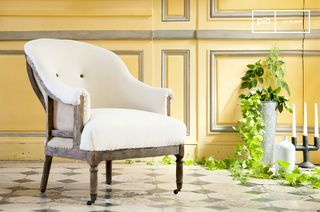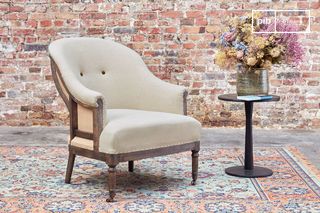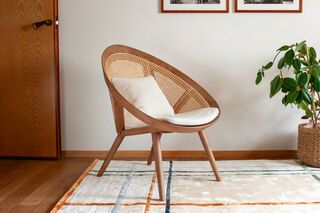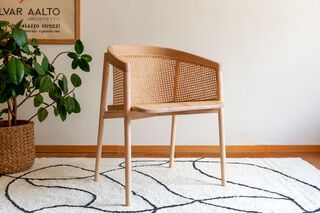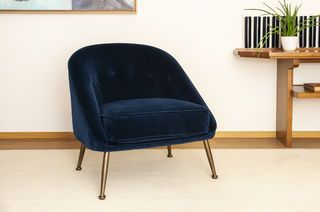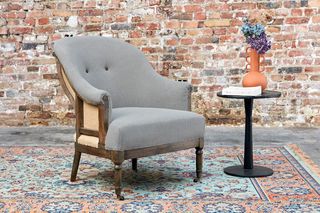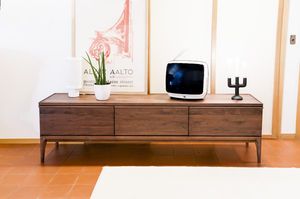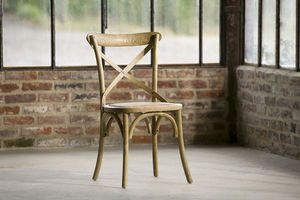Round armchairs
Round armchairs are distinguished by their continuous shapes and enveloping geometry. Their circular or semi-circular seating induces a relaxed, sometimes slightly reclined posture. This morphology influences their positioning in space: they rarely lean against a wall, and often occupy a central or visually recessed position. The round chair category includes stand-alone models, whose size requires sufficient clearance to allow full reading of their volume. read more >
Filters
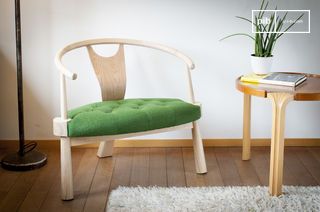
Three-legged armchairWellinfield
£705 £495-30%
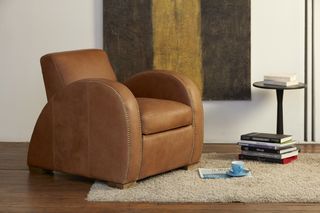
Camel leather club armchairRockefeller
£1700 £1530-10%
Summer Sale
Up to 30% off a wide selection of chairs, furniture, and lighting.
Offer valid while stocks last.
Best-Sellers

Round armchair: sculptural seating with continuous lines
The round armchair adopts a circular or semi-circular geometry that alters the usual perception of seating. Unlike angular or cubic armchairs, its silhouette imposes a softer spatial relationship, with no protruding angles. This morphology has a direct influence on posture: the user is often positioned in the center of the seat, with support distributed laterally rather than structured vertically. This type of chair is not designed for prolonged work or support, but for a moment of relaxation or occasional reading.
The size varies from model to model, with some reaching a diameter of over 90 cm. This scale calls for thoughtful layout. Because of their shape, round armchairs are not designed to be glued to a wall or aligned with other furniture. They are best suited to open areas: the corner of a room, the center of a secondary living room, or a transitional zone in a large bedroom. Their circular shape, perceived as a single unit, requires visual distance so that the object can be read as a whole volume.
Structure, materials and visual perception
The structure of a round armchair can rest on a fixed or swivel base. In both cases, stability is ensured by a large support surface. Some models are built around a concealed wood or metal frame, others use a one-piece shell in composite or upholstered material. The seat can be evenly upholstered or punctuated with movable cushions. The choice of upholstery strongly impacts the overall visual effect: thick fabric accentuates perceived volume, velvet absorbs light, taut leather clarifies contours.
The continuous line of the round armchair creates an effect of immediate presence in space. It is rarely neutral in a dense composition. This typology is sometimes used to break up a series of linear pieces of furniture, introducing variation in form and rhythm. It can also function in pairs, arranged opposite each other around a central element (coffee table, circular rug, standing lamp).
Function, positioning and care
The round armchair is suitable for moderate domestic use. It is not intended for prolonged sitting or very active posture. Its comfort depends on foam density, seat tilt, and softness of upholstery. Seat height is often lower than conventional standards, which can influence the feeling of welcome and support. It is therefore advisable to test the model in real-life conditions, or to check the exact dimensions before fitting it.
As for maintenance, this depends entirely on the upholstery: fabric models can be removable or stain-resistant, while leather models require regular maintenance with suitable products. Because of its shape, the round armchair has no nooks and crannies that are difficult to clean, which simplifies visual and functional maintenance.
In conclusion, the round armchair category groups together pieces with a strong formal identity, suitable for open spaces and non-intensive use. Their choice must take into account the layout, the legibility of the shape and the overall logic of the room's layout.
The round chair is a perfect complement to the round chair
